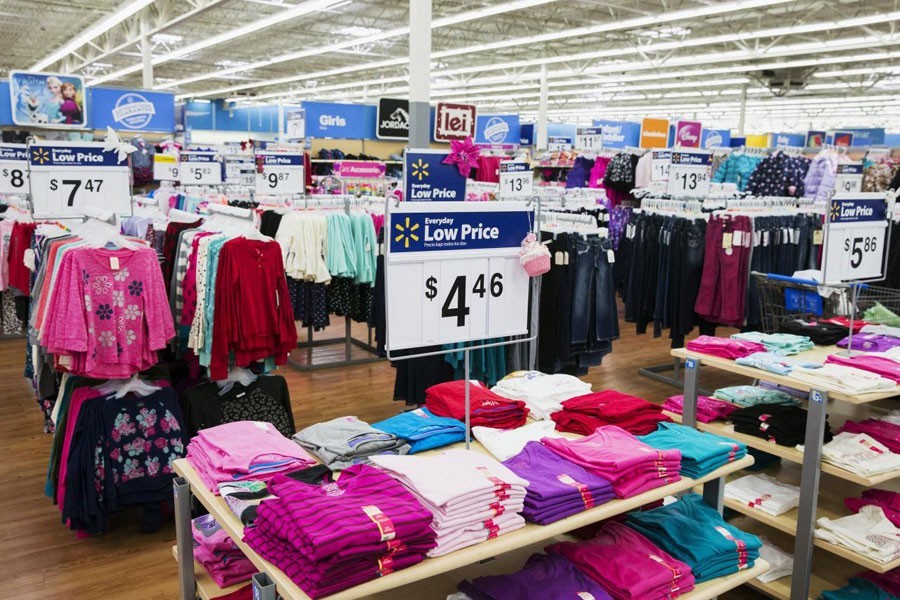Price competitiveness to lure more US apparel companies to source from Bangladesh

Published :
Updated :

Bangladesh’s price competitiveness will continue to lure more US apparel companies to source from the country in the next two years, according to a study.
Terming Dhaka’s much concentration on basic items ‘competitive disadvantage’, it predicted that diversifying the export product structure and improving production flexibility and agility will be critical for Bangladesh to play a more significant role as an apparel sourcing base for US fashion companies in the post-COVID world.
The ‘2021 Fashion Industry Benchmarking Study’ also revealed that US companies’ plan to work with fewer vendors in Bangladesh will intensify competition among thousands of local suppliers thus making small and less-competitive ones vulnerable.
The findings of the eighth edition of the study, conducted jointly by the United States Fashion Industry Association (USFIA) and the University of Delaware, were released on July 19.
It surveyed executives from 31 US-based leading fashion brands, retailers, importers and wholesalers from April to June 2021.
This year, Bangladesh ranked fourth top sourcing destination, down from third in 2020, with a 73 per cent uses rate among respondents.
China still remains the top sourcing destination (93 per cent), followed by Vietnam (87 per cent) and India (77 per cent), according to the report.
“The surging sourcing costs are a significant concern to US fashion companies in 2021,” it said adding the US-China tariff war exacerbates the sourcing cost pressures and financial challenges facing US fashion companies during the pandemic.
“China plus Vietnam plus Many” remains the most popular sourcing model among respondents and these two typically account for 20-40 per cent of a US fashion company’s total sourcing value or volume, down from 40-60 per cent in the past few years.
Consistent with the survey results from 2017 to 2020, respondents this year again say Bangladesh offers the most competitive price, it revealed.
From January to May 2021, the average per square metre unit price of US apparel imports from Bangladesh was US$2.5, lower than the world average price of $2.6 per. The unit price was $2.8 per square metre in the corresponding period of 2020.
The average unit price of US apparel imports during the same period of 2021 from China was $1.7, followed by Vietnam $3.0, India $3.1, Cambodia $2.5 and Indonesia $3.5, according to the report.
Vietnam remains a hot sourcing destination; it said adding respondents, however, turn more conservative this year about Vietnam’s growth potential due to rising cost concerns and trade uncertainties.
“Respondents maintain an overall high level of interest in sourcing from Bangladesh through 2023: around 48 per cent plan to expand their sourcing value or volume, including approximately 10 per cent that expects a substantial increase,” it read.
Citing US official data, it said Bangladesh accounted for 8.8 per cent of US apparel imports in the first five months of 2021, up from 8.2 per cent in 2020 and 7.1 per cent in 2019.
However, as a competitive disadvantage, US apparel imports from Bangladesh concentrate too much on basic fashion items, limiting Bangladesh’s export growth, especially when consumers’ demand shifts during the pandemic.
Citing examples the report said between February 2020 and February 2021, US apparel imports from China and Vietnam included more COVID-popular items such as sweaters, smock dresses, sweatpants, and fewer dresses, shirts, and suits.
“Over the same period, the product structure of US apparel imports from Bangladesh changed little, and they also included few COVID-popular categories mentioned above.”
The report also revealed that among the respondents that plan to source more from Bangladesh over the next two years, more than 70 per cent plan to “source from the same number of countries and work with fewer vendors.”
“This emerging trend implies that the competition among the thousands of Bangladeshi apparel suppliers will intensify. While competitive suppliers will benefit from more sourcing orders, smaller and less competitive ones could become more vulnerable,” it noted.
Besides, respondents still believe sourcing from Bangladesh represents a relatively higher compliance risk than many of its rivals.
Citing the last year’s findings, the report said respondents see the dissolution of the Alliance for Bangladesh Worker Safety (Alliance) and the Accord on Fire and Building Safety in Bangladesh (Accord) as not helpful with building more confidence in Bangladesh’s social responsibility practices.
Frequent media coverage about various social responsibility problems that remain in the Bangladeshi garment industry, from new fire accidents to garment workers’ poor treatment during the pandemic and their concerns about the expiration of the Alliance and the Accord, may also affect respondents’ assessment, it explained.
munni_fe@yahoo.com


 For all latest news, follow The Financial Express Google News channel.
For all latest news, follow The Financial Express Google News channel.